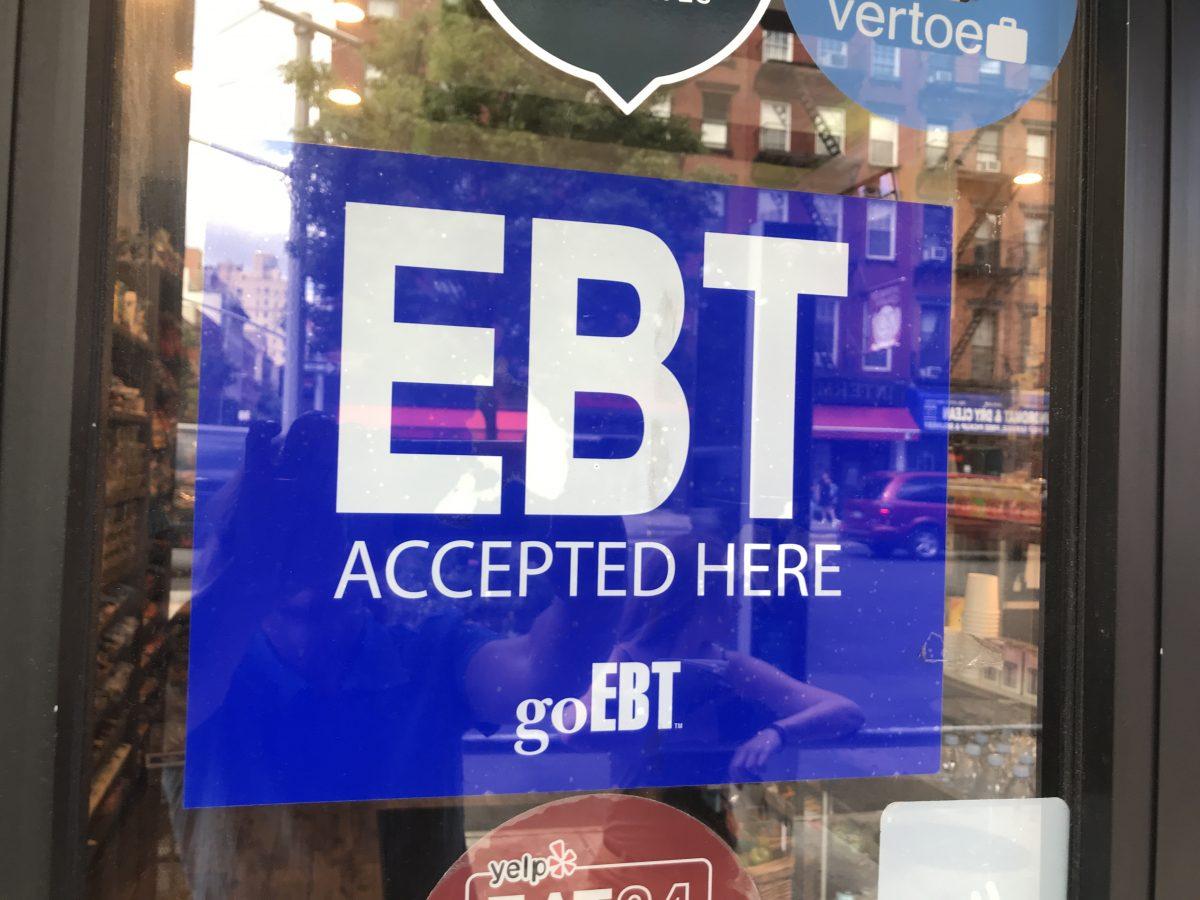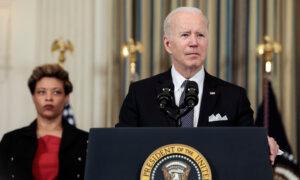House panel chair calls on USDA to cut—literally—the fat out of food stamp spending.
The U.S. Department of Agriculture’s (USDA) $25.1 billion Fiscal Year 2025 (FY25) budget request is $2.2 billion more, or 8.7 percent higher than its recently adopted FY24 spending plan and requests $7.7 billion for its Special Supplemental Nutrition Program for Women, Infants, and Children (WIC).
“That’s $700 million above the recently-enacted FY24 level, which was already $1 billion over FY23,” said Rep. Andy Harris (R-Md.), chair of the House Appropriations Committee’s Agriculture, Rural Development, Food and Drug Administration Subcommittee during a three-hour March 21 budget hearing.
It’s curious, Mr. Harris said, that USDA is requesting a $1.7 billion WIC increase when its “own data shows participation has been declining” for two years, especially since June 2023. Also curious, he said, is the White House claiming “just last week, ‘Inflation is down by two-thirds from its peak and costs have fallen for everyday purchases from a gallon of gas to a gallon of milk.’”
If participation and inflation are down, why is WIC’s budget up? he asked.
Because Congress can’t pass a budget on time, Agriculture Secretary Tom Vilsack said. The budget anticipates a 1-percent increase in WIC enrollment but the rest is a “contingency fund” to ensure sustained funding through budget impasses, continuing resolutions, and the expensive consequences they engender.
“It’s to get it back in fiscal order, number one,” he said. “Number two, we have two different contingency funds [in the budget]. There is a smaller contingency fund to address specific state issues. From time-to-time, states have an issue relative to their ability within WIC to provide services.
“The best thing,” Mr. Vilsack said, “would be for a budget on Sept. 30 to be passed.”
That wasn’t the answer Mr. Harris wanted.
“My conclusion is that, actually, the increased cost of the WIC program is the inflation that has been caused by this administration,” he said.
“I think it’s both,” Mr. Vilsack said. “I think there’s an expectation that there will continue to be expansion of WIC participation, but it’s only 1 percent,” with the remaining increase “backstops” to ensure sustained funding.
“If we are confronted with … uncertainty on whether the WIC budget is not fully or inadequately funded, for whatever reason, or we are faced with a shutdown, that we basically have the resources to continue on,” he said.
Rep. Rosa DeLauro (D-R.I.) said she was “intrigued by the new proposal to backstop WIC funding so we do not face nutrition assistance cliffhanger like we just went through” with a USDA budget adopted six months after the fiscal year began.
Federal Government’s Most Complex Budget
While discussions about WIC, the Supplemental Nutrition Assistance Program (SNAP), and the Summer Electronic Benefit Transfer (EBT) Program consumed significant spans of the hearing, the first on USDA’s FY25 budget, topics ranged across a vast realm of issues and programs.
Subcommittee members asked Mr. Vilsack, who also served as Agriculture Secretary in the Obama administration, about labor costs, rural economies, farm income, foreign land acquisitions—particularly by fronts for the Chinese Communist Party (CCP)—the Commodity Credit Corporation, crop insurance, citrus greening, forest management, renewable energy subsidies, Chesapeake wild-caught catfish, relocation of grizzly bears into the Northern Cascades, and what timber should be planted in Great Lake states where the climate is now like Arkansas.
All that and more are incorporated into the USDA budget. Its FY25 funding request itself incorporated within the tiered overlay of the five-year Farm Bill and add-on policy adjustments and funding from Congress for programs under its sprawling mantle.
It is the federal government’s most complex, confusing budget.
But Mr. Harris said USDA’s discretionary ask is $25.1 billion, $2.2 billion more than its FY24 budget. Ms. DeLauro later said USDA was seeking $24.5 billion, $2.3 billion more than FY24.
It’s like counting haystack straws in a wind tunnel.
Regardless, it’s a lot of money, and “it’s our job as appropriators to ask questions about the requests for all of the programs, including WIC,” Mr. Harris said.
“There’s bipartisan support for the WIC program,” he said, “and all of us understand the tremendous benefit provided to mothers, infants, and children when they get a healthy, nutritious start.
“But,” Mr. Harris continued, “whenever Republicans want to even begin to have a realistic conversation about the necessary funding level for the program or suggest it could be any different from the Biden administration’s request, we are immediately accused of wanting to starve pregnant women and their infants, which could not be farther from the truth.”
The bottom line is “there are a limited number of resources for all the programs funded by this bill. I think it’s reasonable” to ensure it’s spent wisely, he said.

A Doctor In The House
As a physician, Mr. Harris is concerned about increasing obesity rates.
“We need to have honest discussion about whether the federal government should continue to subsidize unhealthy food in the SNAP program,” he said, noting over the last 20 years, cities and states have attempted to disallow food stamp purchase of “sugary drinks” and other foods.
“But, each time those requests have been denied” because USDA succumbed to pressure from lobbyists, Mr. Harris said. “As we work through the FY25 process, it’s important we look for ways to best return SNAP, the largest food assistance program in America, to its original purpose of advancing the nutrition needs of participants, not providing empty calories.”
He expressed disappointment that his request for a “small, voluntary pilot program” that restricts unhealthy food and beverages from SNAP benefits was not included in USDA’s budget request.
Mr. Vilsack said USDA has the capacity to establish such a program but it’s not as simple as it sounds because “there’s a fairness and consistency issue here.”
If taxpayer dollars are “directly linked to more nutritious decisions, are you going to make that same decision for FEMA emergency relief? A farmer gets an emergency check from the government, cashes it, goes to the grocery store. Are you going to restrict him? Why not? Well, fundamentally, that’s the issue.”
“I guess anyone who gets a federal subsidy, we are going to see whether or not they are obese. And if that’s the case, let’s check into what kind of food they’re buying. Let’s set up an office of the food police,” Ms. DeLauro said.
It’s not a joke, Mr. Harris said, telling Mr. Vilsack that since he assumed office under the Obama administration in 2007-08, “obesity rates among U.S. adults have increased by almost 9 percent, from 33.8 percent to 42 percent.”
In addition, he added, as of 2017-18, “half of all Americans now have one or more preventable chronic diseases, most of them diet-related or linked to diet.”
Mr. Vilsack said obesity isn’t any more prevalent among SNAP recipients and lower-income Americans than it is among the middle-class and wealthy.
Maybe so, Mr. Harris said, but “the difference is, we’re not buying the food.”
Original News Source Link – Epoch Times
Running For Office? Conservative Campaign Consulting – Election Day Strategies!


